Because a car or truck’s brakes are so important, it’s good to know how to determine when the parts need to be replaced. Brake rotors or discs wear out over time and many factors determine when they should be replaced.
The front brakes on vehicles are designed to provide about 70% of the total brake capacity. With the engine in the front of most vehicles, the front weighs more and needs extra braking capacity. Because of the weight distribution, the front brake pads and rotors typically wear out before the rear pads.
Depends on Vehicle Type
All rotors do not have to be replaced at the same time. Measure the width of each brake rotor and inspect the inside and outside surfaces to determine if they need replacing.
High Performance Vehicles
Some high-performance vehicles are designed so both the front and rear brake components wear out at the same time. In this case, replace all the wear components, brake pads, and rotors at the same time.
Passenger Vehicles
For many vehicles, the front brake components wear out before the back ones, especially the brake pads. Brake pad wear becomes obvious because the friction material wears away and creates brake noise and extended stopping distances.
Brake rotors can warp if they get too hot. This happens when the brake pad friction material wears down. When the front brake rotors warp, a typical symptom is the steering wheel will shake when braking. When the rear brake rotors warp, drivers will feel pulsing through the brake pedal or shaking from the rear of the vehicle. If the rotor is not replaced, the shaking will get worse, so, replace any warped rotors.
Rotor Replacement Methodology
To determine if a brake rotor should be replaced, measure the thickness using a micrometer. Examine the surfaces for signs of overheating such as ridges, cracks, and blue spots. Every brake rotor has a published standard width and a published discard width. If the brake rotor width is less than the published discard width, replace the rotor. If the rotor has hot spots, cracks, or ridges, replace it even if the width is thicker than the discard measurement.
Replace brake rotors based on the wear and condition of each rotor. Unless there is damage from road debris or worn-out brake pads, rear rotors should last two or three times longer than front rotors.
If brake pad wear and rotor width measurements are significantly different side to side, the calipers should be checked for damage or failure and replaced along with the pads and rotors.
About Goodyear Brakes
Goodyear Brakes manufactures premium quality brake bundles, calipers, rotors, brake pads and all the hardware required to successfully install brakes, all backed by a national warranty, decades of production experience and one of the best-known names in automotive excellence. The brake pads are manufactured in the USA using a proprietary green production process by a company with more than 50 years of experience in friction science. The Goodyear Brakes product line is available through Goodyear Brakes at Amazon, CarID, Buy Brakes and AutoAnything.
Goodyear (and Winged Foot Design) and Blimp Design are trademarks of The Goodyear Tire & Rubber Company used under license by FDP Virginia Inc., 1076 Airport Road, Tappahannock, VA 22560, USA. Copyright 2020 The Goodyear Tire & Rubber Company. Goodyear Brakes and FDP Virginia are not responsible for its products when they are subjected to improper applications, installation, or accident.
Blogs
Winter Is Coming: Watch Out for Moisture in Your Brake Fluid
Test for Contamination and Flush Out That Nasty Old Fluid to Protect Your Brake System You may keep a careful watch on the wear of
What Are the Signs That It’s Time to Change Your Brakes?
How do you know when to change your brakes? A general rule of thumb is to replace your brake pads every 35,000 miles — but
How Do You Know When Brake Rotors Need Changing
Resources Like babies, brake rotors need changing. Not often, but because brake rotors are central to all vehicle braking systems, it pays to know when




